"Letting FOMO drive your AI investment is a recipe for panic spending!" - Futurist Jim Carroll

The other day, I mentioned that one of my favourite newsletters among the flood of content out there is Korn Ferry's This Week in Leadership - you can sign up here. It's a regular short overview of key trends with links to longer articles, and I often find nuggets of powerful insight in there.
One of the most recent reports on the issue of 'risky business' with a summary of a survey from 250 global CEOs and Board directors about the issue of risk.
It's a powerful overview of the state of mind in the C-suite today, but I asked Google Gemini to summarize the findings in the newsletter.
A recent Korn Ferry survey of 250 CEOs and board members, titled "Risky Business," reveals that a significant majority (63%) of organizations have experienced a rise in overall risk exposure in the last year, with little expectation of this trend slowing down. The survey highlights a widespread lack of confidence among leaders in their ability to manage these risks. Here are the key takeaways from the report:
Confidence Crisis: A staggering low percentage of leaders feel prepared to handle major threats. Only 11% are "fully confident" in their overall risk management capacity. This lack of confidence extends to specific areas, with even lower figures for geopolitical risk (7%), economic volatility (9%), AI and climate risks (fewer than 10%), and talent and skills management (4%). Study recent literature from June 2025 on, to determine if this has become a widespread problem
This caught my interest! So let's take on the topic in bold - AI. Here's what Korn Ferry had to say about the current state of affairs:
"AI: It's among the most expensive keeping-up-with-the-Joneses games in corporate history" - Korn Ferry Report, 2025
Add to that this gem that I dug out in my research about how organizations are approaching AI:
"Step one: we're going to use LLMs. Step two: What should we use them for?" - IBM Report, 2025
All of this got me thinking quite a bit, since many of my keynotes cover the gap between the reality of the AI deployment and the promise - or what we might call a reality gap. I set out to do some research, gathering over 300 recent articles about this issue, and pulled together two reports. You should go through them.
The first is the Great AI ROI (Return on Investment) Reckoning of 2025. You can grab the PDF here.
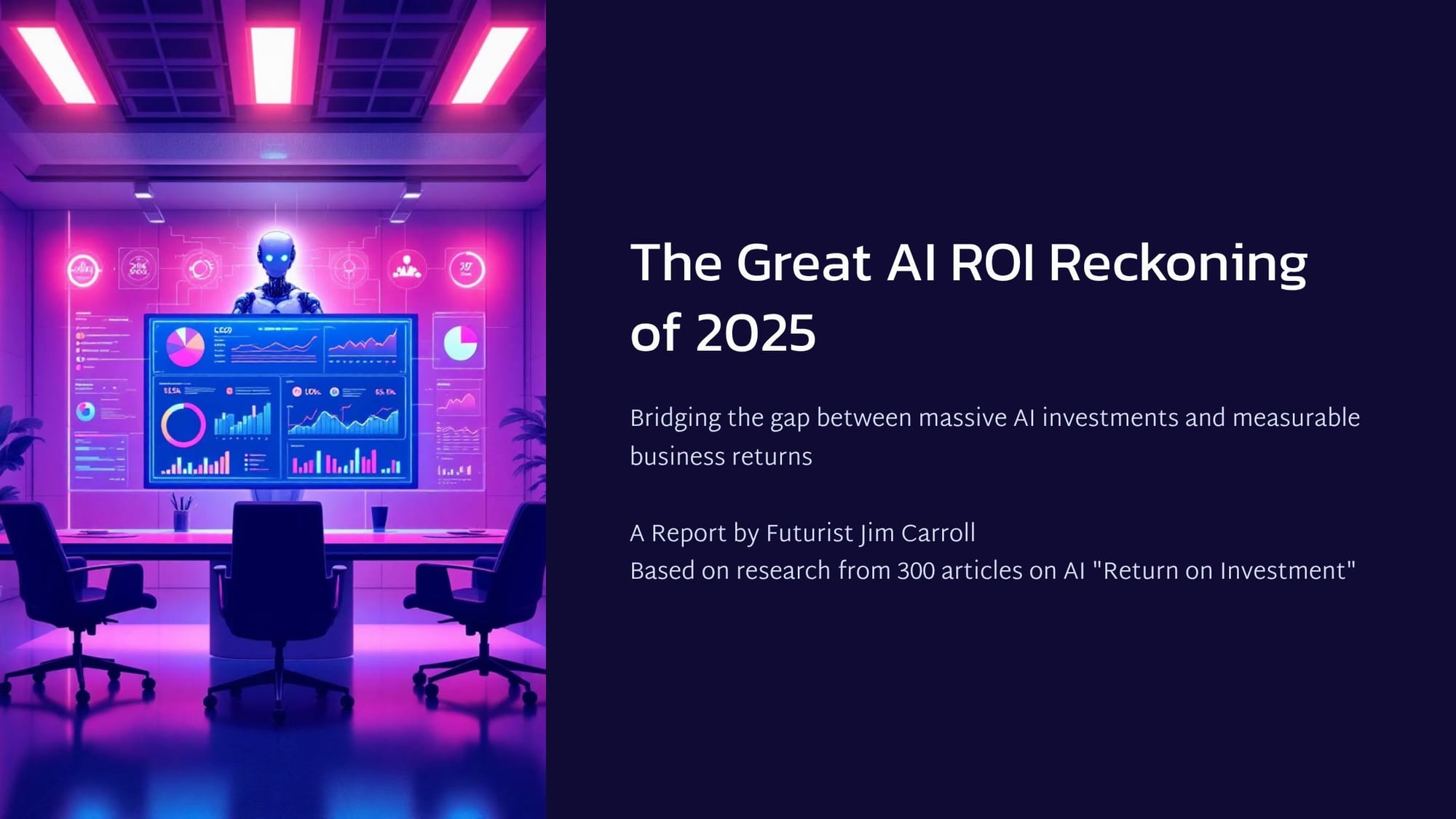
I did some pretty deep research to pull this one and the next together - here's a sampling of some of the articles I pulled out, both good and bad.
- Why MIT Study on Enterprise Market is Pressuring AI Stocks, Investor's Business Daily, August 20, 2025
- Global CIO Study Reveals ROI Remains Greatest AI Adoption Barrier, Despite Three-Fold Spend Increase, Business Wire, February 5, 2025
- New Global Study Reveals 71% of Enterprises Are Using AI, but Only 30% Are Ready to Unlock Its True Potential, Business Wire, July 30, 2025
- Philippine CEOs boost AI use, but returns lag - IBM Institute study, Business World, July 16, 2025
- More Than Half of Companies Adopting AI are Worried About the Reliability and Quality of Their Data, According to New Dun & Bradstreet Survey, Business Wire, February 11, 2025
- 68% of C-suite Say AI Adoption Has Caused Division at Their Company, Reveals Writer AI Report, Business Wire, March 18, 2025
- Tech Execs Are Freeing Capital for Robust AI Investment; Near-Term ROI, Use Cases, Pathways to Monetization Unclear, Says AlixPartners Survey, Business Wire, September 4, 2024
- AI fuels retail growth, over 55% report strong ROI: KPMG, Financial Express Online, March 26, 2025
- CAIOs Key to AI Success: Up to 36% Higher ROI on AI spend, finds IBM-Dubai Future Foundation Study, Al-Bawaba News, July 15, 2025
- AI is not always being used the way the boss ordered, finds workplace survey, The Economic Times, June 18, 2025
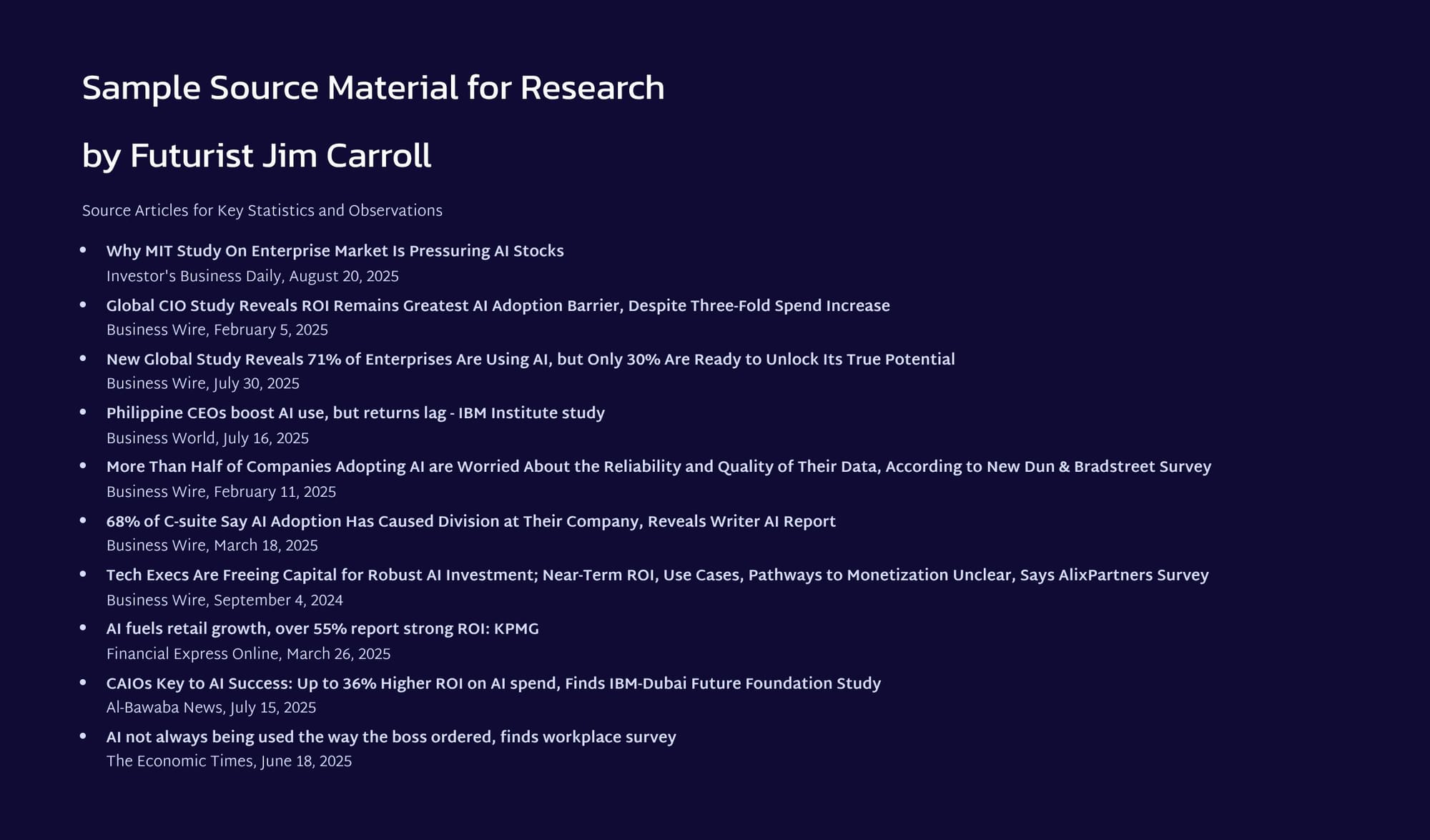
And here's the reality check: despite unprecedented AI adoption, organizations face a critical disconnect between spending and results.
- a high adoption rate: From one survey, there is a 71-88% rate of enterprise AI adoption - organizations are busy implementing AI solutions globally
- a high failure rate: 95% all all pilots fail. There are far too many generative AI pilots with no measurable impact
- $0 Clear ROI: In many cases, organizations are seeing little tangible return from the majority of AI investments
Despite unprecedented adoption, organizations are seeing a huge disconnect between spending and results.
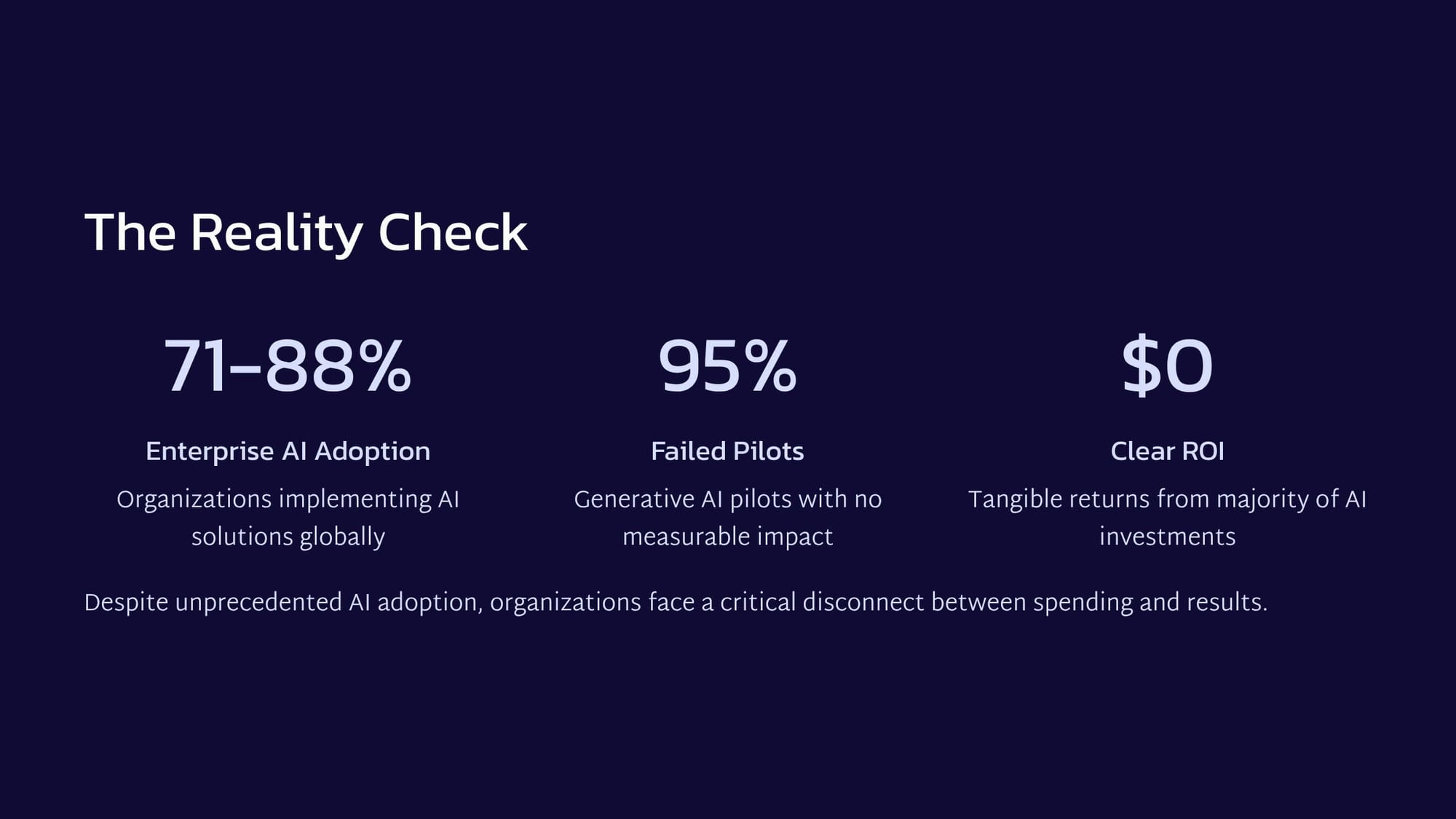
That's not me rhyming that off - that's what's in the research. For example, despite significant investment, many AI initiatives are struggling to demonstrate measurable value!
"The report's central finding underscores that 95% of generative AI pilots have produced no measurable impact for enterprises. The report further notes that genAI deployments at an enterprise level are not yet generating adequate return on investment." Amit Daryanani, Analyst at Evercore ISI, Investor's Business Daily, August 20, 2025
Another article echoes this tune:
"While most AI use cases have met business expectations, proving the return of these investments remains challenging—financial risk and uncertain ROI rank as the greatest barriers to AI adoption." — 2025 CIO Playbook Report, Business Wire, February 5, 2025
And most AI projects are ridiculously limited - doing ChatGPT, ignoring such things as machine vision, robotics, and other AI opportunities.
"What's most startling is that many companies think using a GenAI tool is the same as having an AI strategy." — Arthur Goldstuck, CEO of World Wide Worx, The Mercury, July 18, 2025
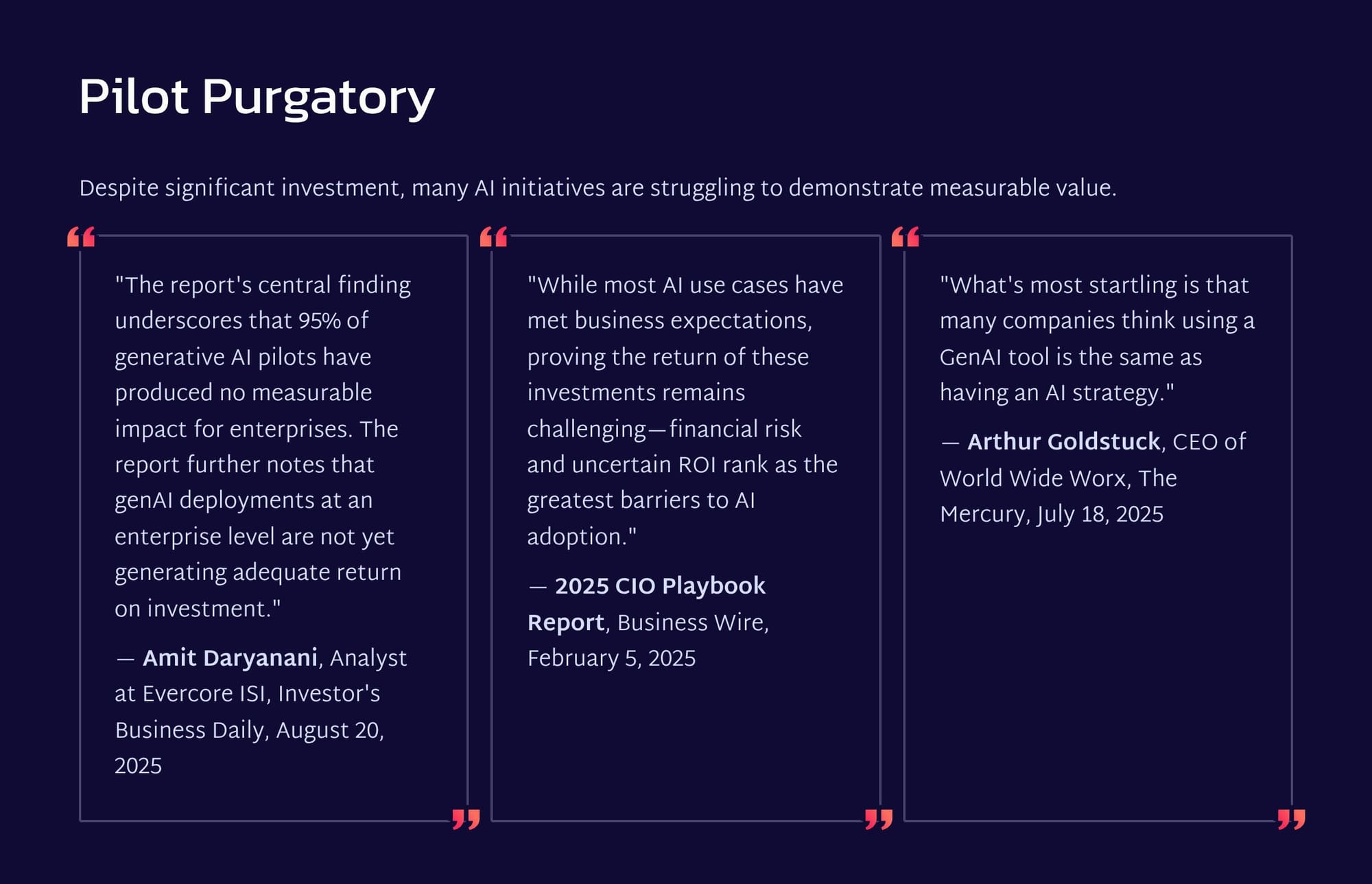
Even so, there is a massive AI investment surge, despite these poor results:
- 89% of organizations plan to increase AI investments in 2025
- 75% of companies are allocating up to half their IT budget to AI
- There is a 3x expected increase in AI spending this year compared to the previous year
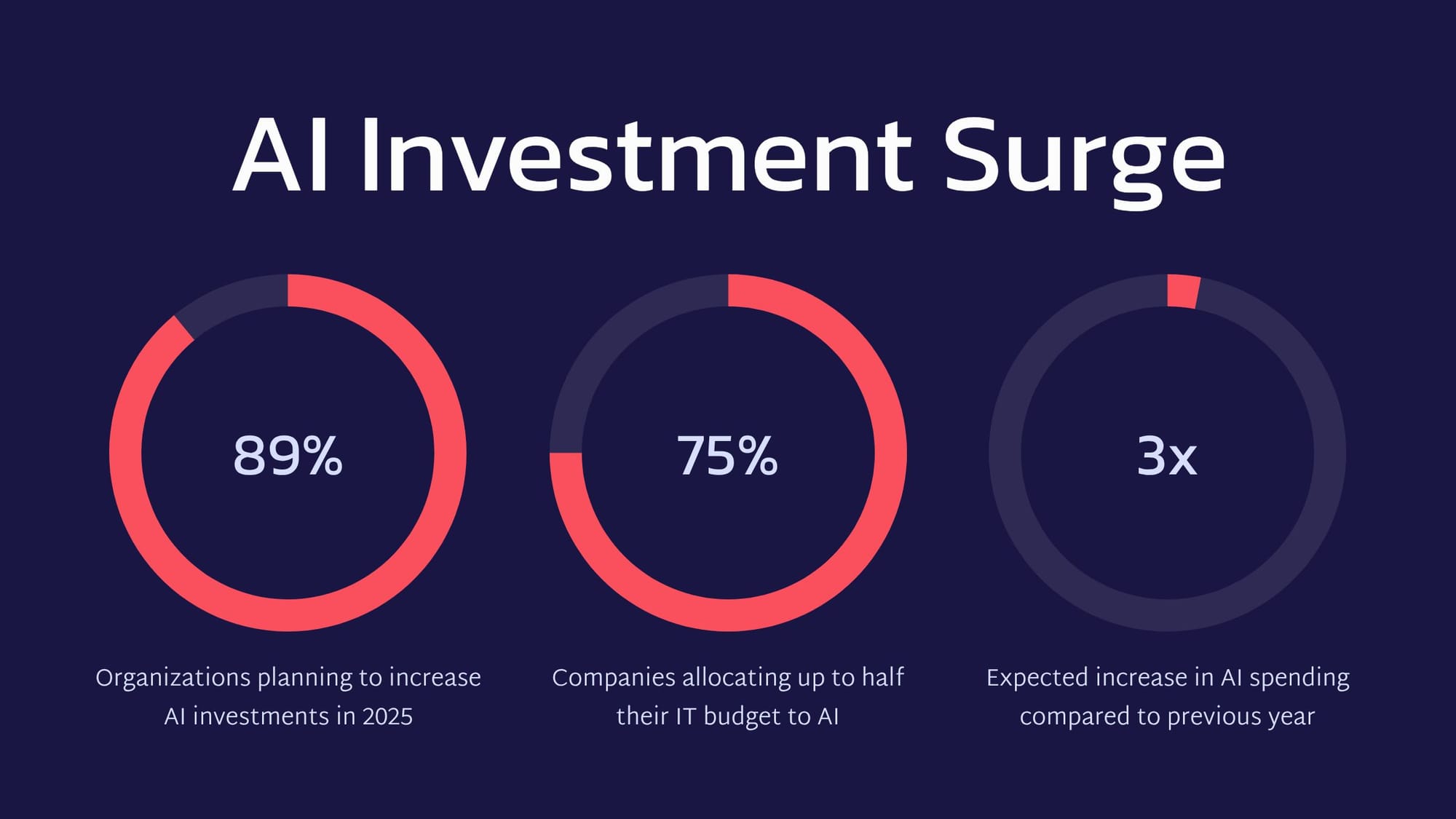
And all this fits into the idea of the Confidence Paradox that I covered the other day. There is a lot of executive optimism about AI:
- 85% of respondents say their AI investments meet or exceed expectations
- 76% identify AI as the primary driver of long-term growth
The reality check compared to such optimism?
- Only 23% report initiatives delivering expected returns
- benefits often aren't readily evident to leadership
Yikes! What kind of magic is this?
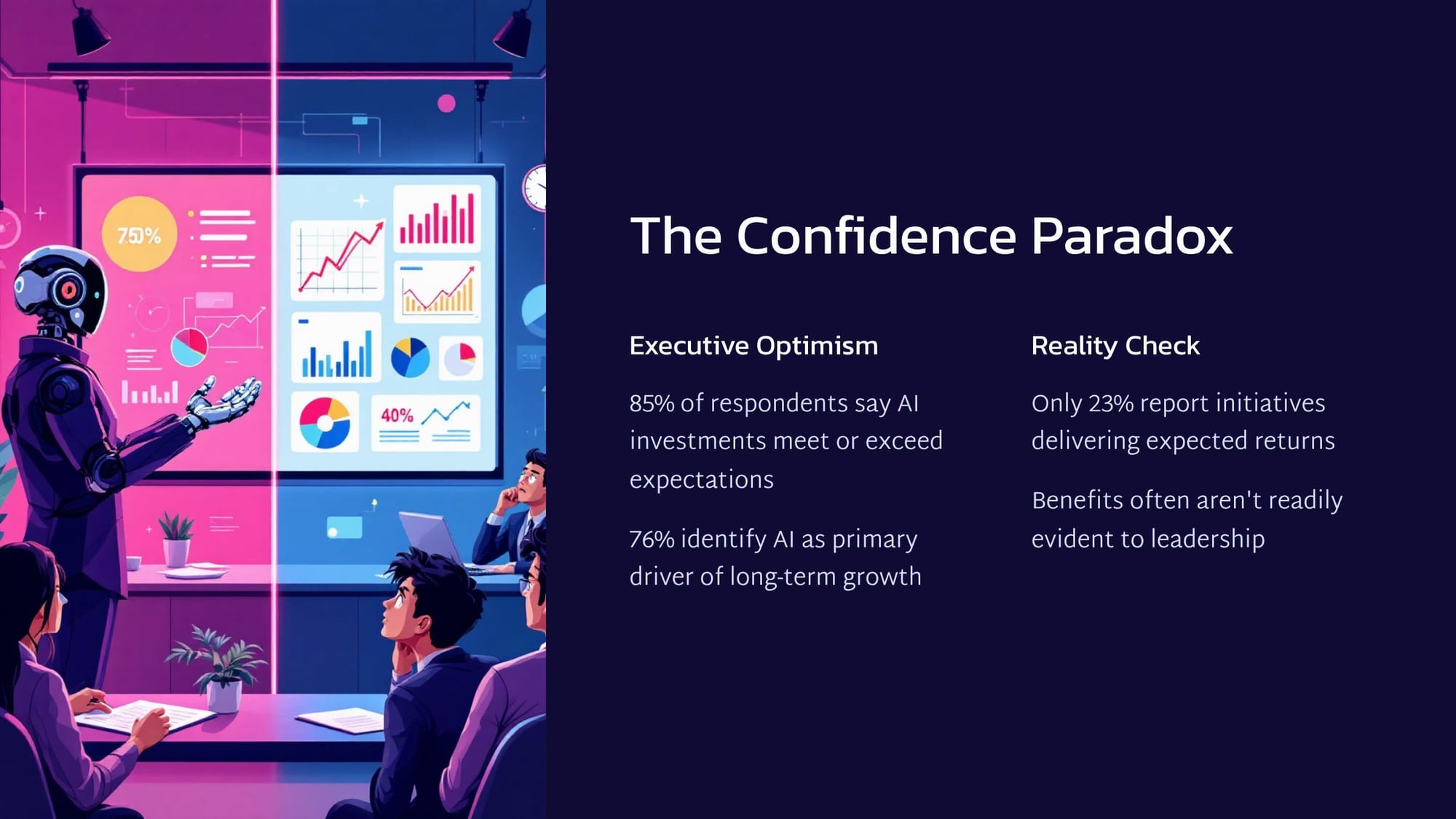
It gets worse when you dig into this stuff - we are seeing most projects never really accomplishing much:
- High Adoption: 71% of companies actively using or piloting AI solutions
- Low Scaling: Only 30% are prepared to scale these pilot initiatives enterprise-wide
- A Deployment Gap: Only 1 in 4 AI initiatives reach production deployment
In other words, we're stuck in pilot mode - aka 'pilot purgatory.'
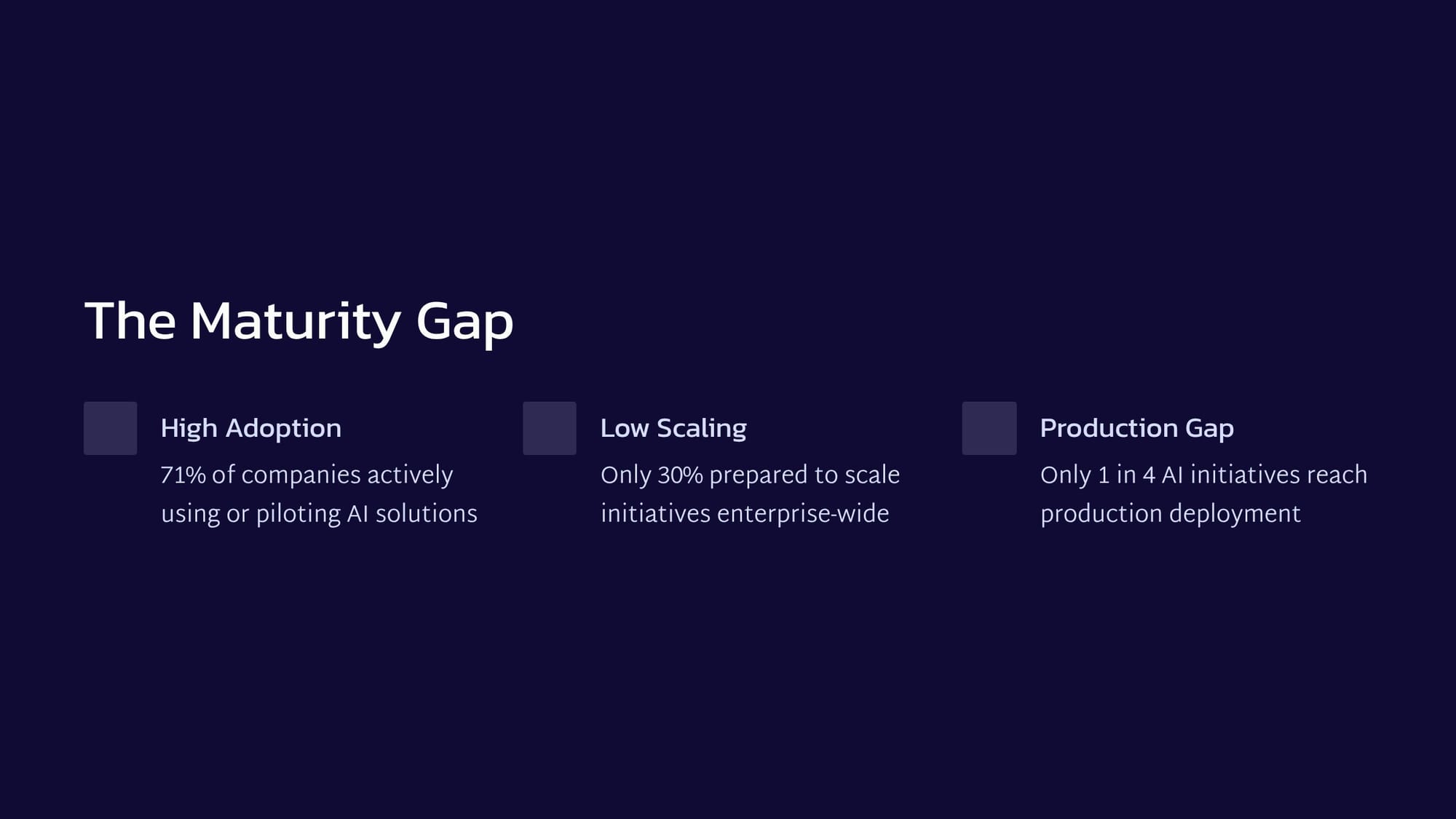
What's driving this? The good old FOMO factor - fear of missing out on the AI rush! When everyone is talking about AI and it's magic wonders, it seems necessary to jump on board!
The result is that many organizations are investing in AI without a clear business case, a phenomenon dubbed "panic-spending" driven by fear of missing out rather than a strategic imperative. This reactive approach leads to fragmented efforts and wasted resources across the enterprise.
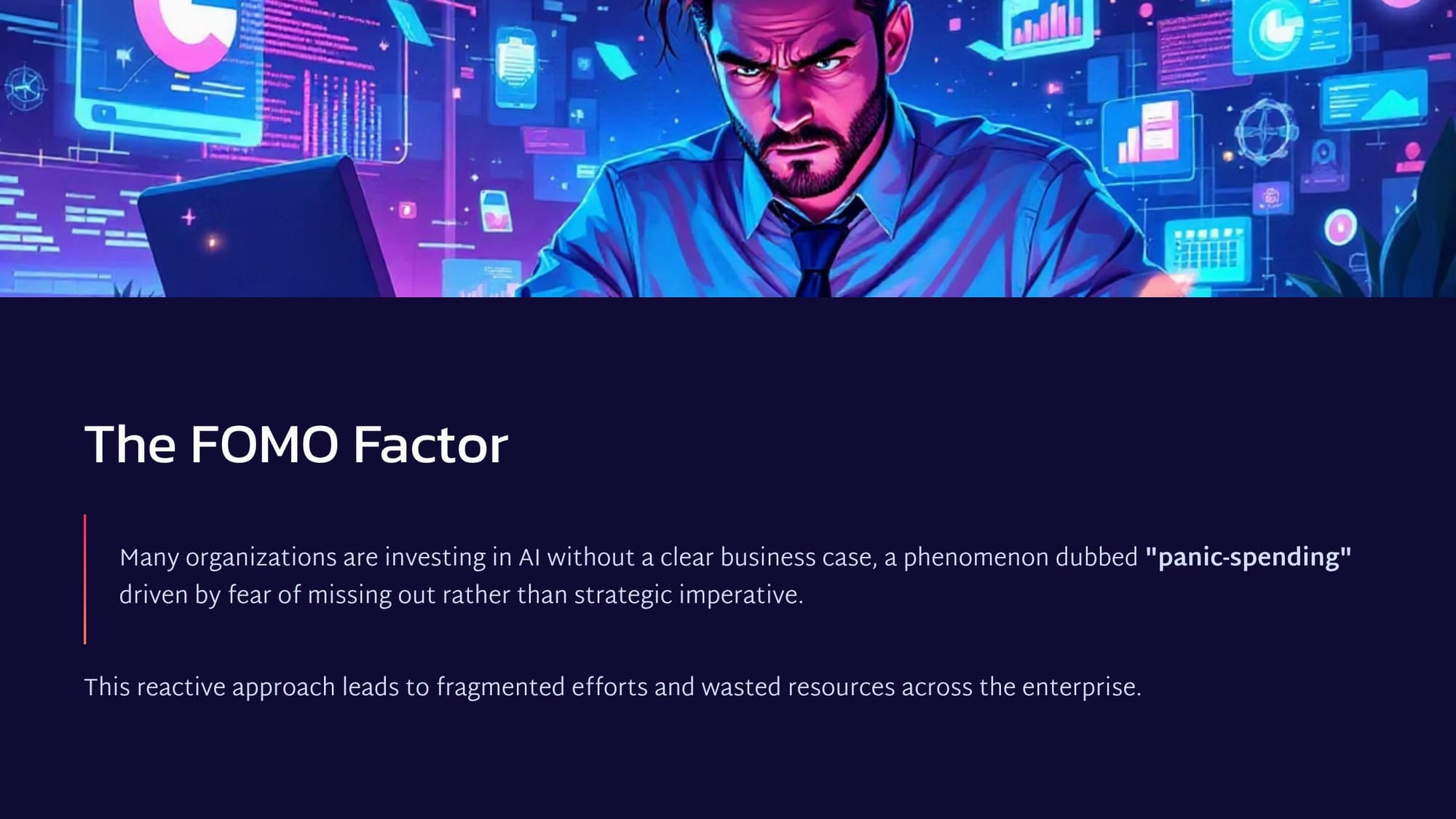
This leads me to my 2nd research report: Beyond the Hype: Navigating the AI ROI Chasm. The PDF is here.
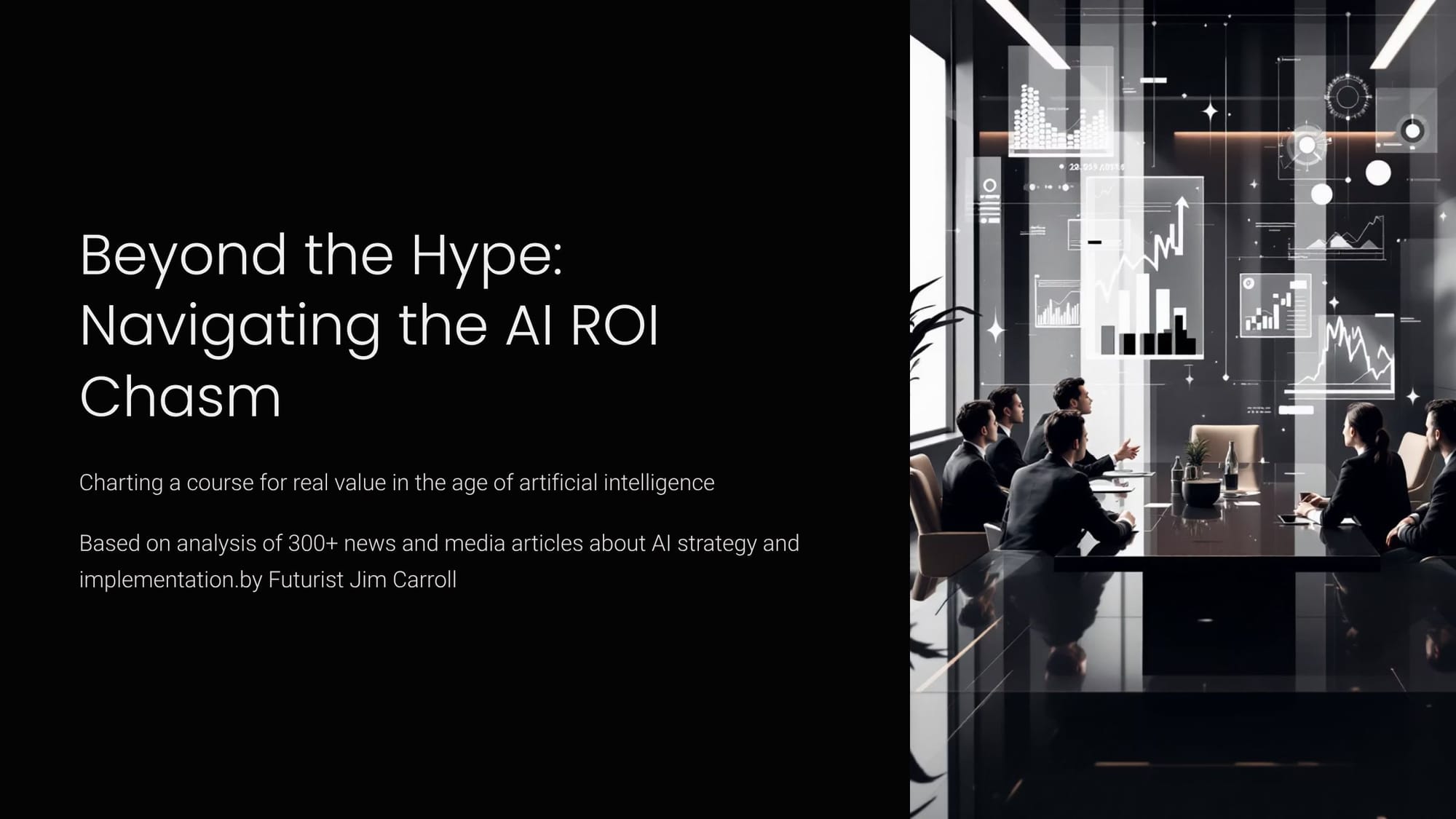
The fact is, organizations are pouring unprecedented resources into AI, yet many are struggling to see a clear, measurable return on that investment. This disconnect between spending and results is creating a challenging environment for leaders across the globe.
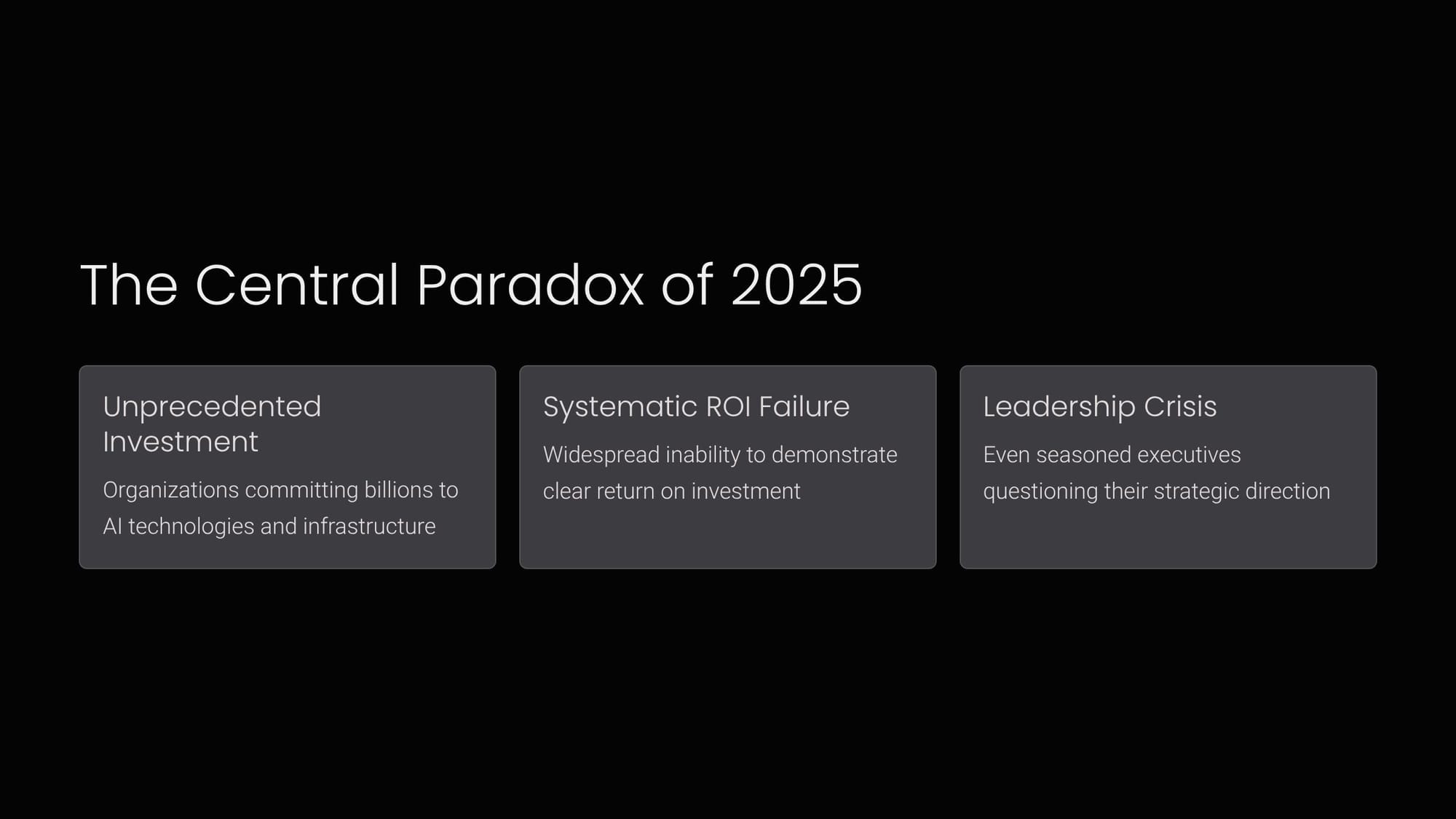
This paradox is further highlighted by a growing "GenAI Divide" within organizations. There is a significant disconnect between how leadership perceives the use and effectiveness of AI and the reality on the ground for employees who use the technology daily. This gap can lead to mismatched expectations and strategic misfires.
- Executive Perception: Leadership often has a high-level, optimistic view of AI's integration and impact
- Operational Reality: Employees and managers frequently face practical challenges with implementation, data quality, and workflow integration that executives may not see.
In other words, there are high hopes but little return!
But wait - there's more! This internal divide is contributing to a confidence crisis in the C-Suite. While executives remain overwhelmingly positive about the long-term potential of AI, they show a surprising lack of confidence in their own organization's current strategy and ability to measure success.
- 82% of C-Suite executives are confident AI is the future.
- However, only 37% are highly confident in their own company's AI strategy.
- A mere 35% are highly confident in their ability to measure AI's return on investment.
In other words, they have high hopes for what it can do, but don't believe their organization can pull it off.
That's not very reassuring given the vast sums of money going into 'this thing.'
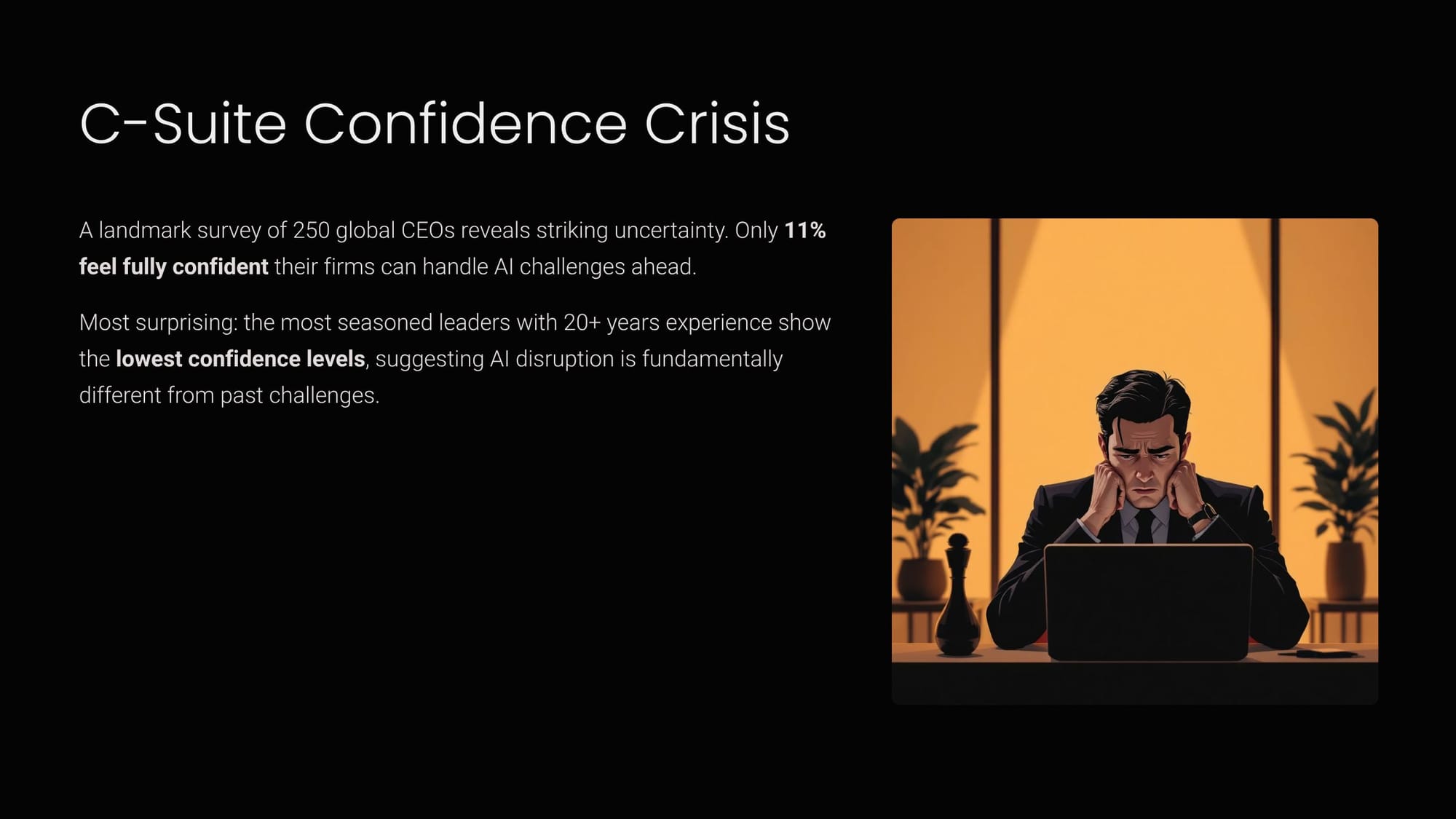
This internal uncertainty is mirrored by observations from industry experts. The consulting firm Gartner provides a sobering reality check, noting that many organizations are caught in the initial hype of AI without a clear path to generating tangible value.
"The reality is that right now, we are at the peak of inflated expectations for AI... Most organizations are still in the foothills of this climb. They are struggling to identify high-impact use cases, grappling with a lack of skills, and trying to make sense of a complex and rapidly evolving technology and vendor landscape." - Gartner
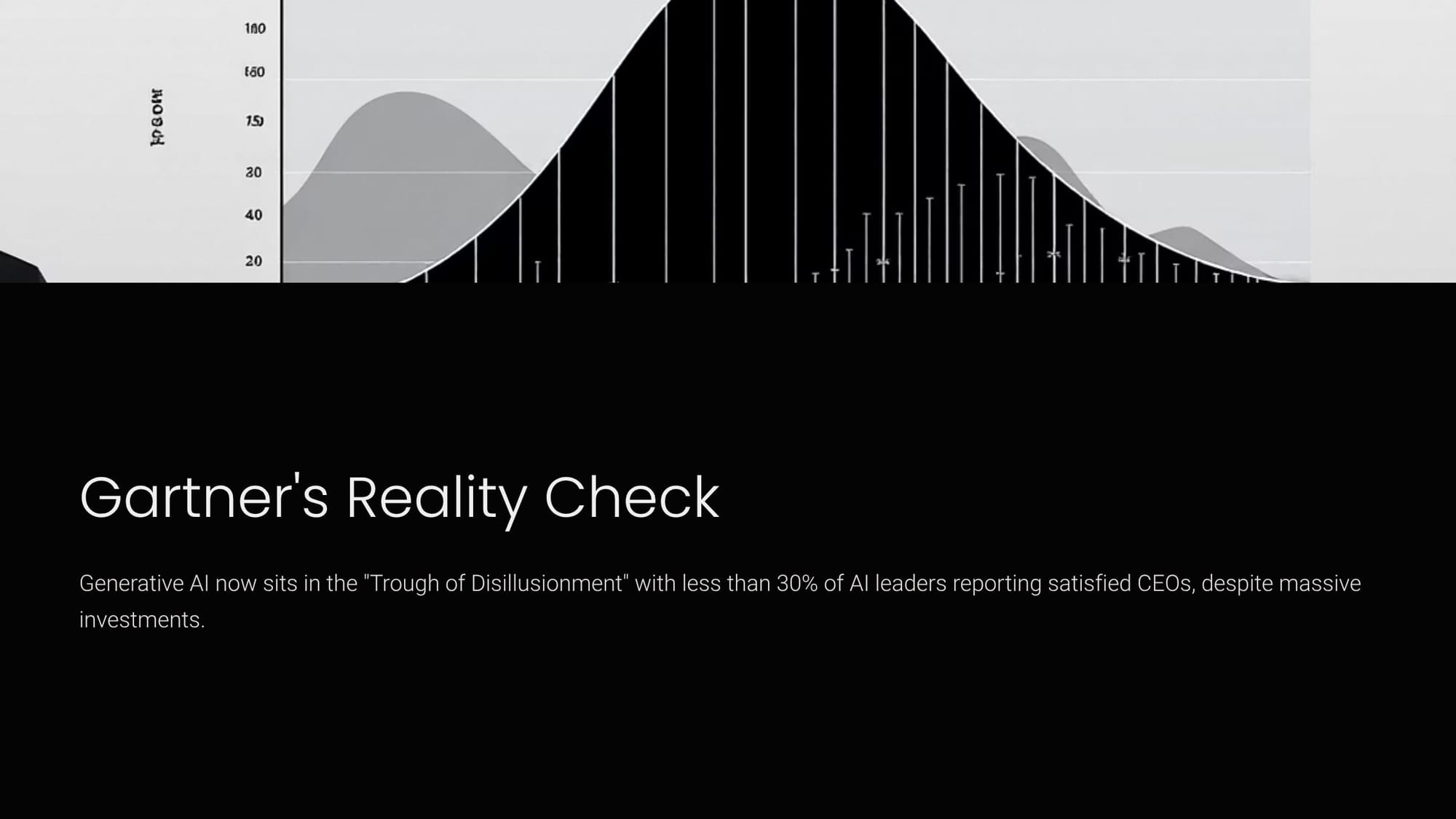
So, what is the primary cause of this disconnect between investment and return? Evidence points to a "strategy vacuum." Many companies are investing in AI reactively, driven by this fear of missing out, rather than proactively as part of a coherent business strategy.
This leads to a focus on technology for its own sake, rather than on solving specific business problems. Without a clear plan, AI initiatives often become isolated experiments that fail to scale or deliver enterprise-wide value.
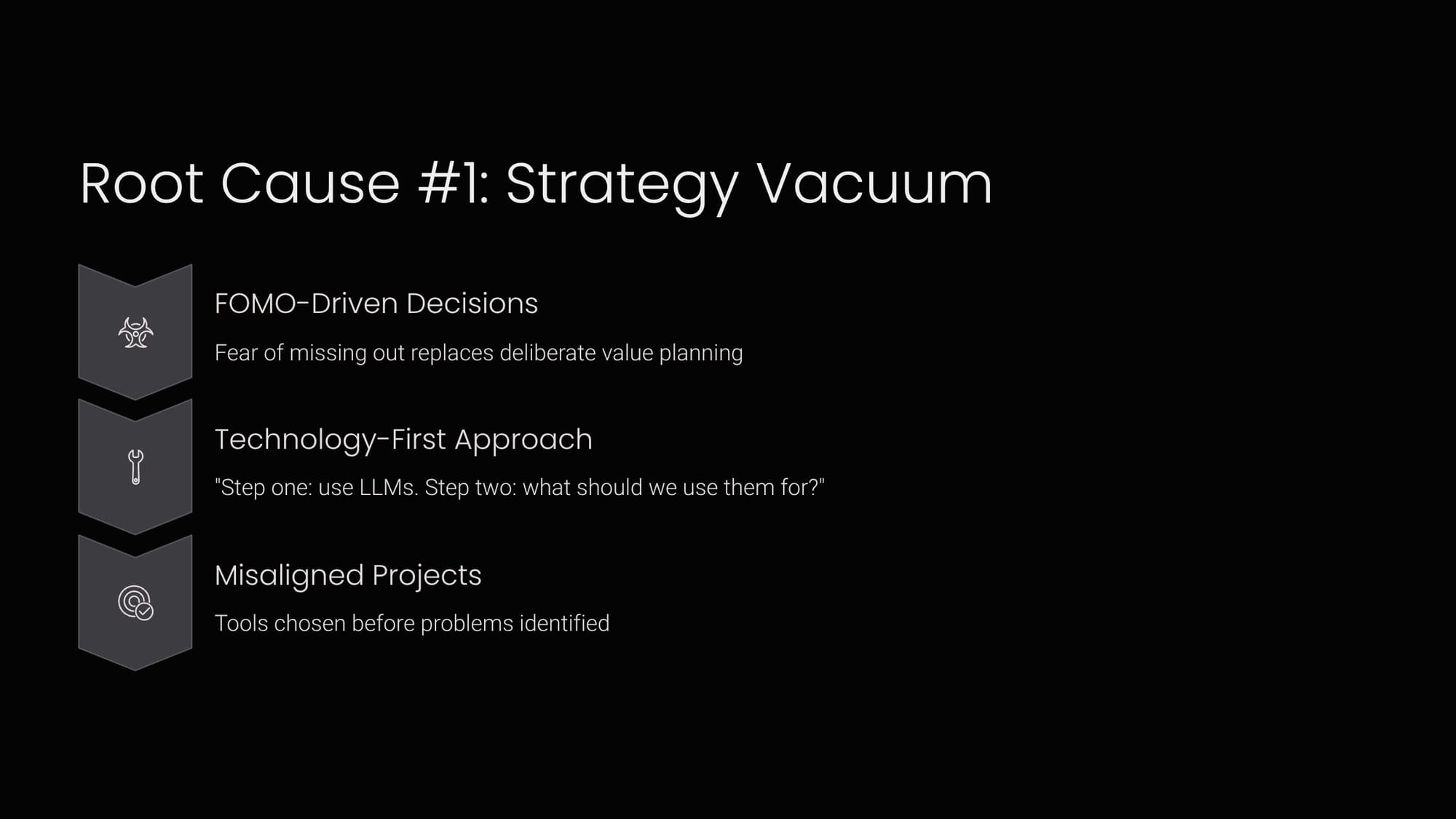
This also leads to the increased risk of AI. It doesn't mean AI isn't being used. Instead, it pushes employees to find their own solutions, leading to the significant hidden risk of "Shadow AI"—the unsanctioned use of AI tools by individuals and teams.
- 70% of employees are using AI tools at work without official approval.
- This creates significant data privacy, security, and compliance risks.
The lack of a formal AI strategy is driving a surge in 'Shadow AI,' where employees use unsanctioned tools to fill the gap, exposing the organization to significant risk.
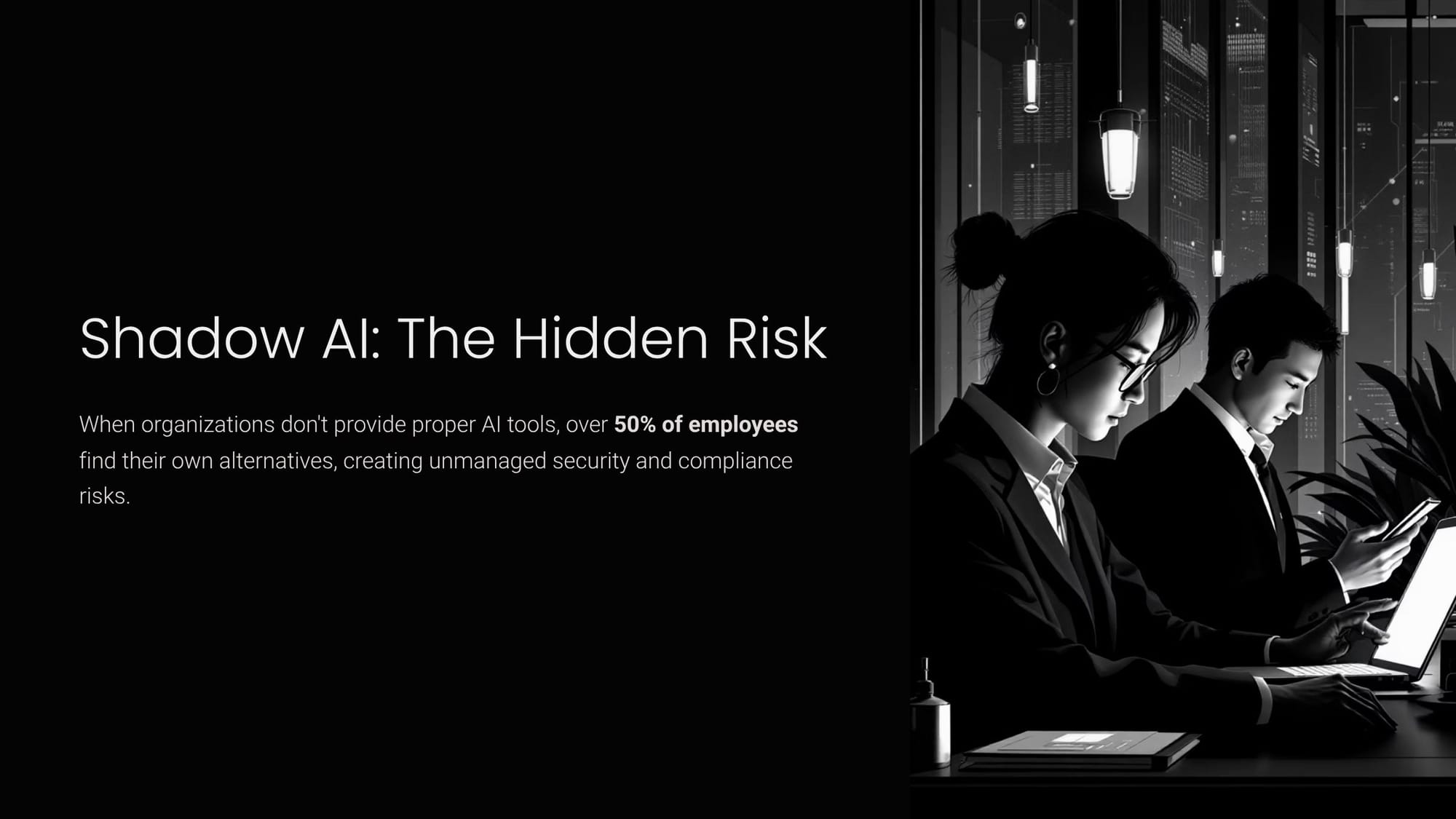
So, is anyone getting a benefit from AI?
What separates the companies succeeding with AI from those that are struggling?
The first key characteristic of these "pioneers" is clear and active executive ownership. When leadership takes direct responsibility for AI strategy, it moves from being a series of isolated IT projects to a core business imperative. This ensures alignment between AI initiatives and strategic goals. This means that AI projects get the necessary authority and resources to drive change across the enterprise.
In other words, you are doomed to fail if you don't start at the top.
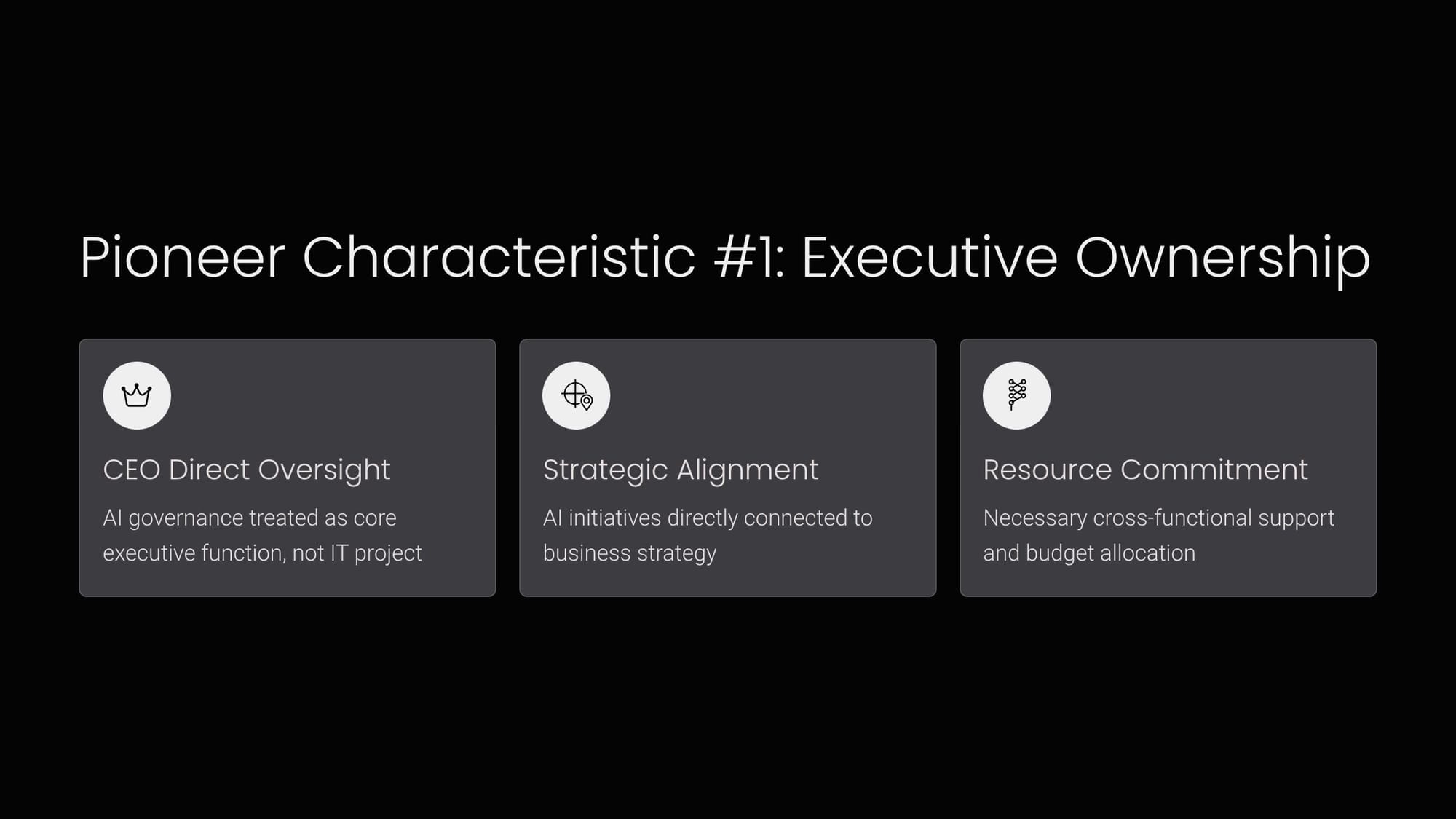
So, where is real AI value being realized? In specific, critical business areas that directly impact efficiency, customer experience, and decision-making.
- Customer Service: AI-powered chatbots and analytics are improving response times and satisfaction.
- Cybersecurity: AI algorithms are detecting threats faster and more accurately than ever before.
- IT Operations: Automation is streamlining processes and reducing downtime.
- Finance & Accounting: AI is automating repetitive tasks and providing deeper financial insights.
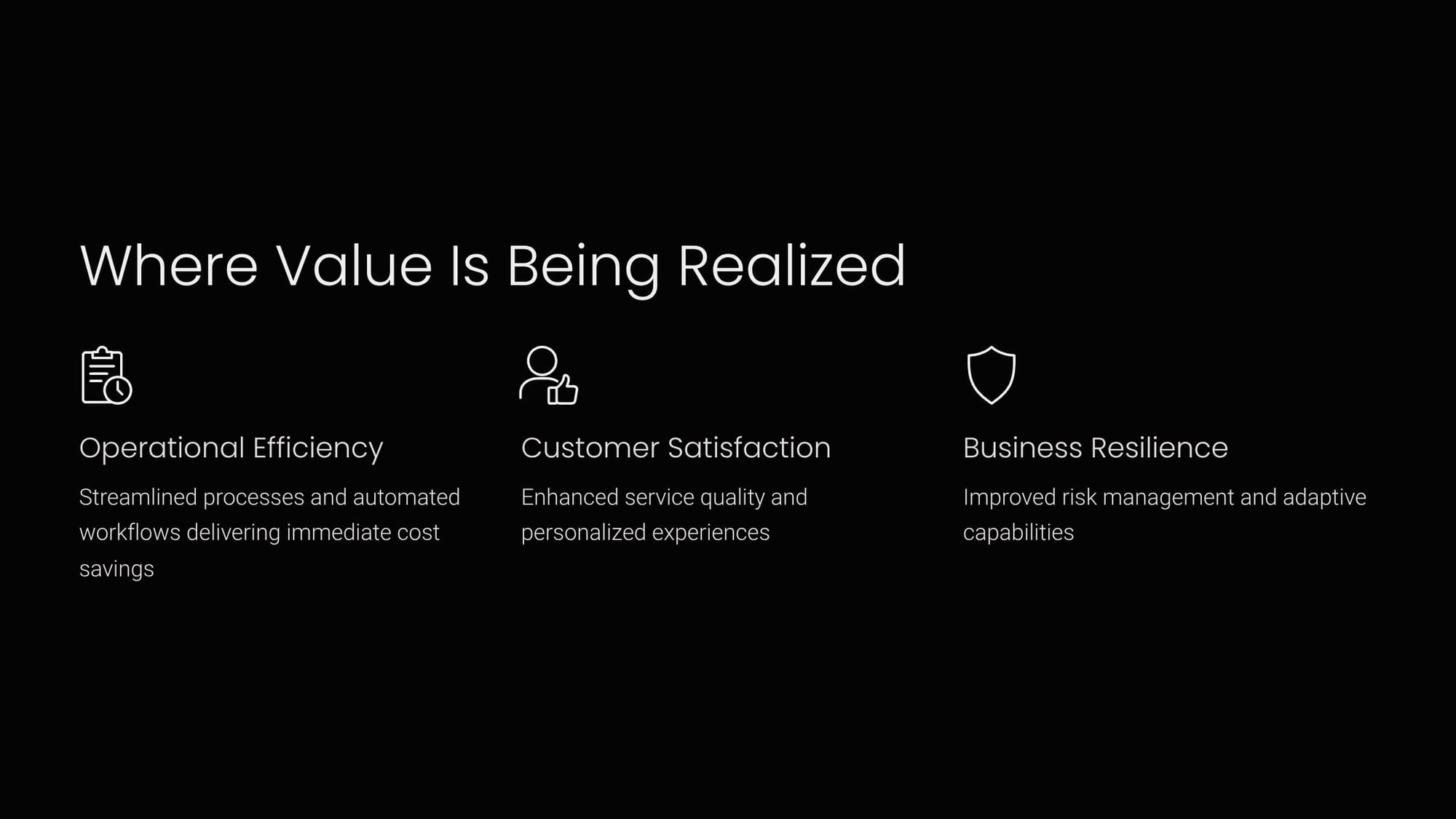
And it's when you dig into specific industries that you see real returns: for example, manufacturing - and often, this goes beyond simple use of large language models like ChatGPT, but instead, machine vision, robotics, and other aspects of the AI Megatrends that I frequently cover:
- Quality Control: AI-powered visual inspection is identifying defects with superhuman accuracy.
- Supply Chain Optimization: Predictive analytics are forecasting demand and preventing bottlenecks.
- Predictive Maintenance: AI is predicting equipment failure before it happens, minimizing downtime.
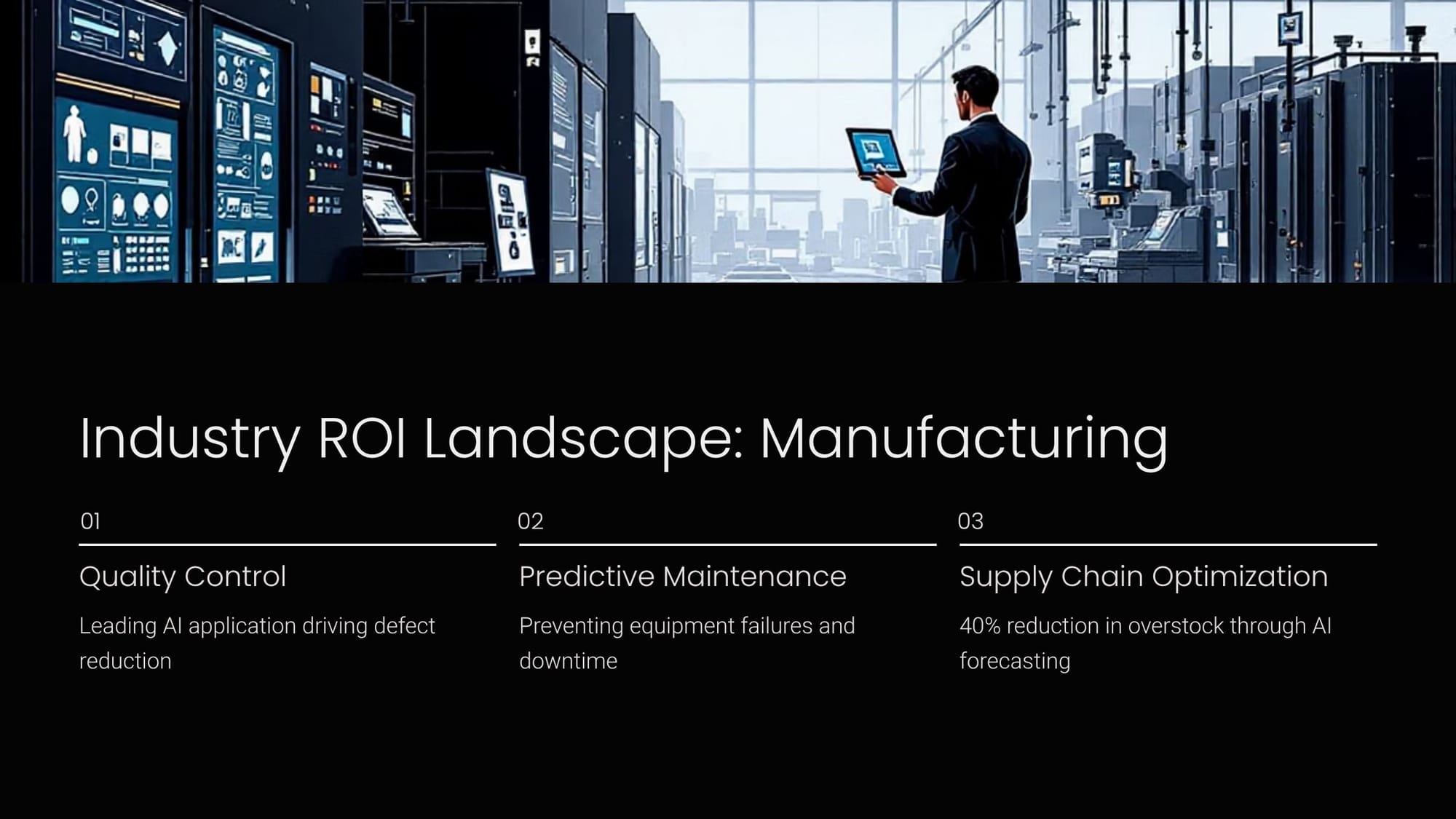
Or take health care, where we are seeing real returns in areas like clinical documentation or the implementation of 'virtual nursing'.
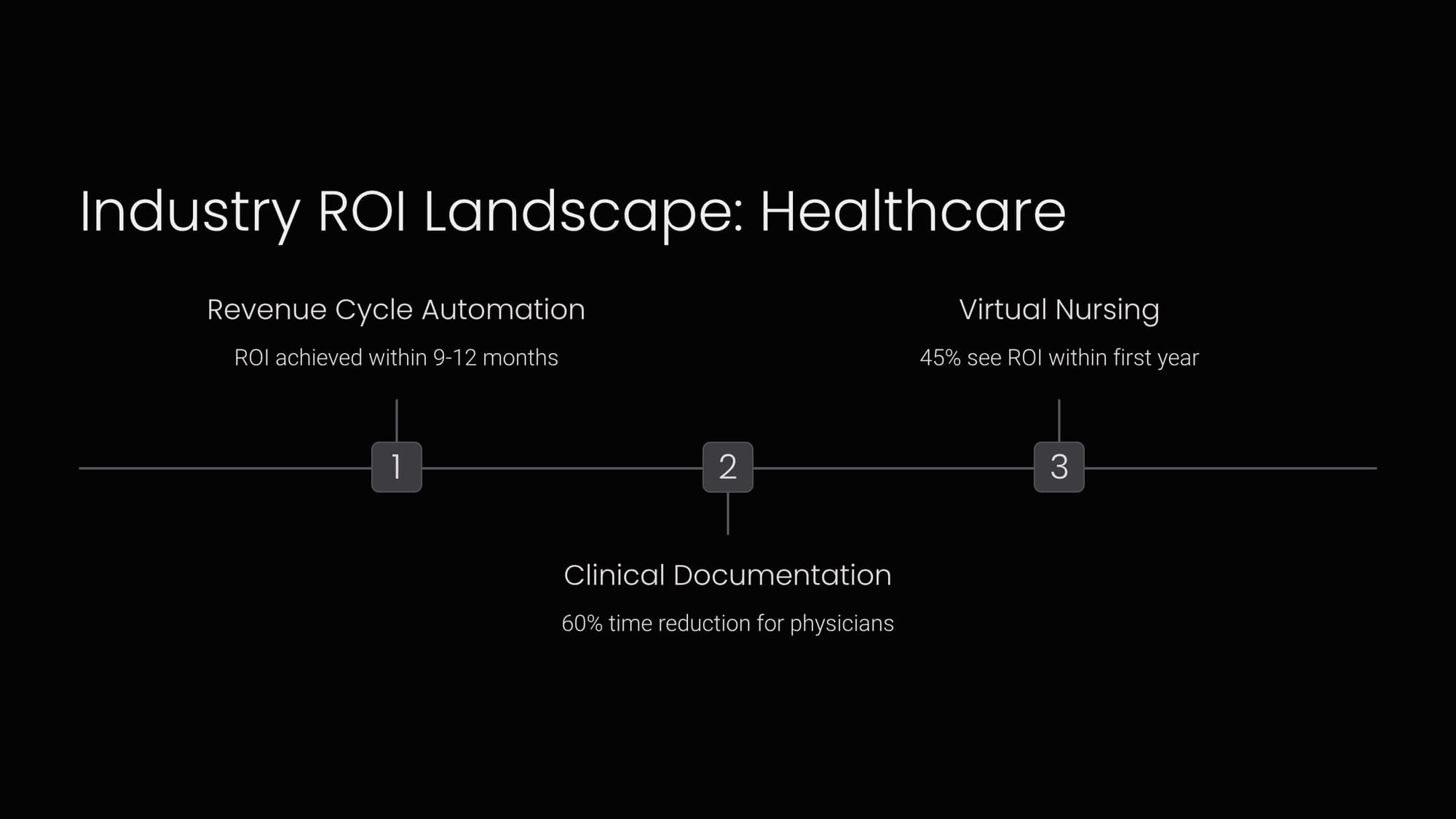
There's more industry insight in the report. I'd suggest you take a look.
Bottom line?
There's no 'there' there yet! Tread with caution!
Futurist Jim Carroll has long believed that when it comes to AI, we are currently living at the top of the hype cycle.

